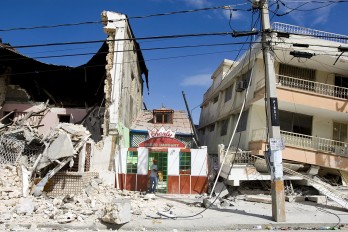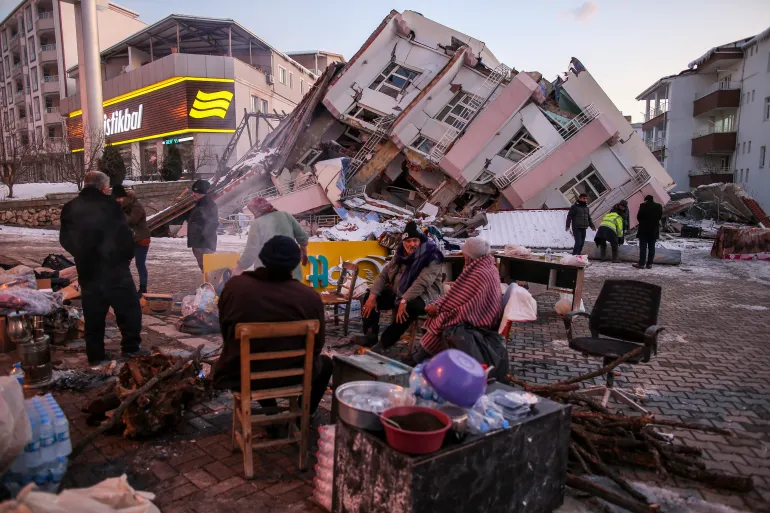Messina earthquake (1908): a civil engineering landmark

The earthquake occurred on December 28, 1908, in the Strait of Messina, which separates the Italian island of Sicily from the mainland (Figure 1). It struck at around 5:20 a.m. local time and its duration was approximately 30 to 40 seconds. The earthquake had a magnitude of 7.1 while a devastating tsunami was also triggered. The tsunami caused widespread destruction and loss of life in southern Italy and Sicily. The epicenter of the earthquake was located beneath the Ionian Sea, just off the coast of Messina.

The exact peak acceleration of the Messina earthquake of 1908 is difficult to be determined as there were no instrumental recordings of the event at that time. However, modern estimates based on historical records and geological studies suggest that the peak ground acceleration (PGA) of the earthquake was probably between 0.4g and 0.5g. The PGA may have varied significantly depending on the distance from the epicenter, the type of soil and bedrock, and other local factors. However, the above estimation provides a general idea of the level of seismic shaking that occurred during the earthquake.
The shaking was felt as far away as Naples, Rome, and even in parts of North Africa. The intensity of the shaking was particularly strong in the city of Messina, which suffered serious damage. More specifically, the earthquake caused extensive destruction as buildings collapsed and landslides occurred in the surrounding areas. Even more devastation was caused, especially in coastal areas due to the tsunami that followed the earthquake. It should be mentioned that waves that reached heights of 12m were reported.
The earthquake caused significant devastation in the region, leading to the complete destruction of several towns and villages, while significant damage to bridges and infrastructure was also reported (Figure 2). It resulted in a high number of casualties, estimated to be between 80,000 to 100,000 people, although an accurate count was challenging due to the magnitude of the disaster and the resulting disorder. Due to the scale of the tragedy, aid and support was offered by several countries.

What is of special interest is that this event led engineers and builders to re-evaluate their building methods and prioritize designs that can resist earthquakes while new building codes, that required structures to be constructed with more robust materials and designed to withstand seismic activity, were implemented. More specifically, in the aftermath of the earthquake, Italy established a National Earthquake Commission to study the disaster and propose measures to mitigate future earthquakes. The Commission developed the first seismic building codes, which were implemented in 1909, just a year after the earthquake. These codes offered guidelines for creating earthquake-resistant structures.
In response to the Messina earthquake, novel building materials and construction techniques were developed to more efficiently resist the forces of earthquakes. Reinforced concrete, which provided excellent resistance to seismic forces in comparison with conventional masonry construction, was one of the most significant innovations. Since then, seismic design codes and earthquake engineering practices have been advanced, integrating new research knowledge, technology, and experience. Currently, seismic design codes and methodologies are utilized globally to ensure that buildings can endure the forces of earthquakes and minimize the loss of life.
Overall, the 1908 earthquake was a landmark event that prompted significant changes in the way buildings, bridges and, in general, infrastructure are designed and constructed, focusing on earthquake-resistant safety. Today, Italy plans to build the world's longest suspended bridge that will link the island of Sicily with the mainland, and specifically Messina with the mainland area of Calabria (Figure 3).

Media
Selected Topics
Want to read more like this?
Earthquake Engineering
Jan, 01, 2019 | EducationEarthquake engineering is a critical field of civil engineering that focuses on the analysis, desi...

5.8-magnitude earthquake strikes Ecuador coast: damaged buildings, huge loss of property, no tsunami
Mar, 28, 2022 | NewsA huge loss of property was suffered when an earthquake of magnitude 5.8 struck Ecuador coast on Sa...

Earthquakes: five deadliest earthquakes ever recorded around the world
Feb, 24, 2022 | NewsEarthquakes are one of the most dangerous natural disasters. More than 100 earthquakes of the magni...

The five strongest earthquakes ever recorded
Sep, 09, 2023 | NewsThe following lines describe five of the most devastating earthquakes in history: The Great Chile...

The first earthquake risk model for the whole of Europe shows the cities and regions most threatened by disaster
Apr, 28, 2022 | NewsScientists have created the first earthquake risk model for Europe which will form the basis for mi...

University of Alaska Fairbanks: They developed an algorithm that can predict earthquakes
Sep, 02, 2024 | NewsThe University of Alaska Fairbanks (UAF) published revolutionary research in Nature Communications...

Experts answer: “Why did so many buildings collapse in Turkey?”
Feb, 06, 2023 | NewsFollowing Monday's terrible earthquakes, many of people are reportedly still trapped in the rubble...

11 strongest earthquakes worldwide over the last 2 centuries
Jul, 11, 2024 | NewsIt is estimated that at least 20,000 earthquakes occur every year worldwide due to the movement of...

Iran: 425 earthquakes struck in one month
Mar, 13, 2024 | NewsAccording to the seismological networks of the Institute of Geophysics at the University of Tehran,...
External Resources
Trending

Diaphragms
Structural stability

Nominal flexural strength of a reinforced concrete beam

Calculate the Maximum Shear Stress

Truss deflection using the unit load method

Overhanging beam: shear force and bending moment calculation

Calculation Example – Beam with inner hinge (Part A). Find the Reactions

